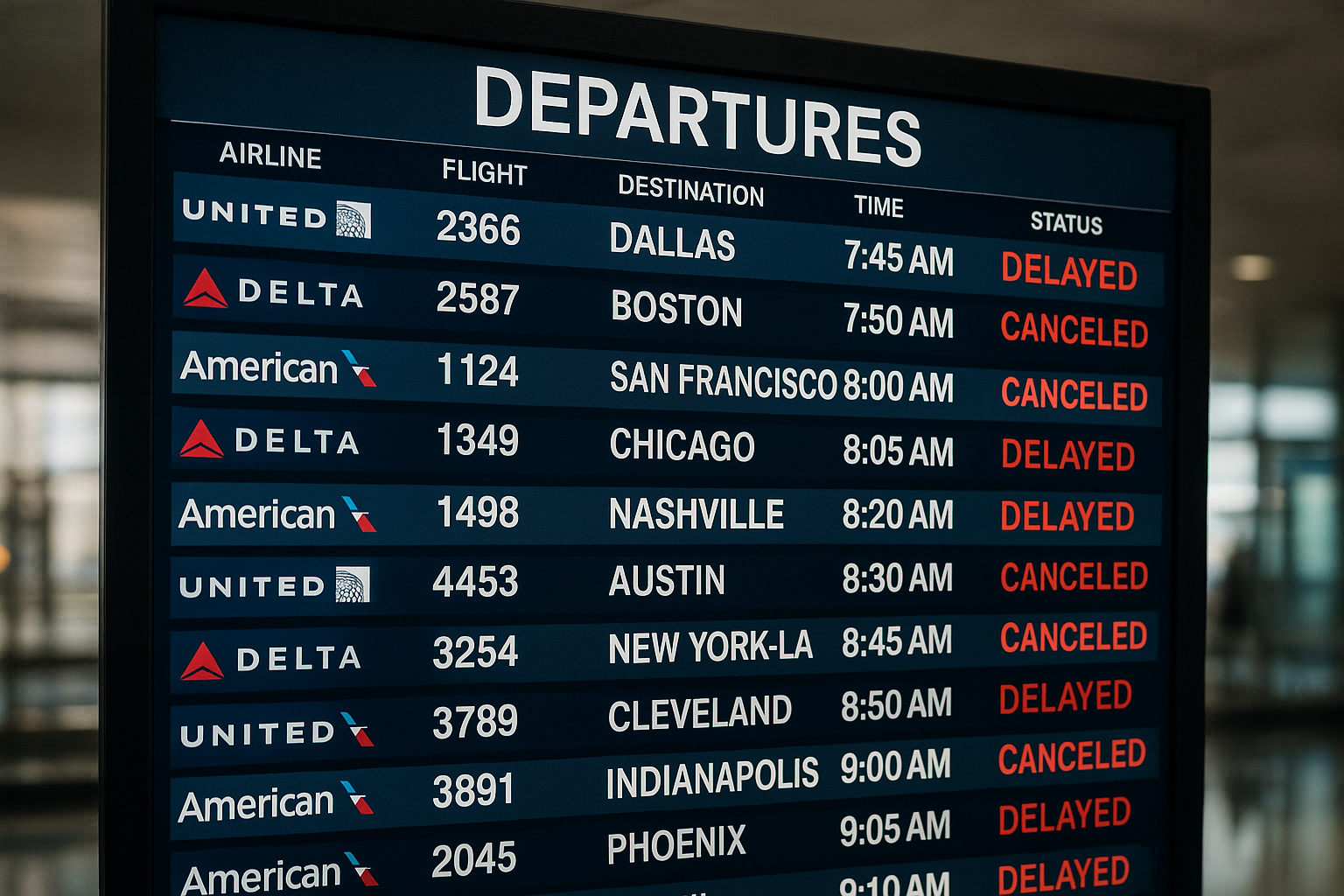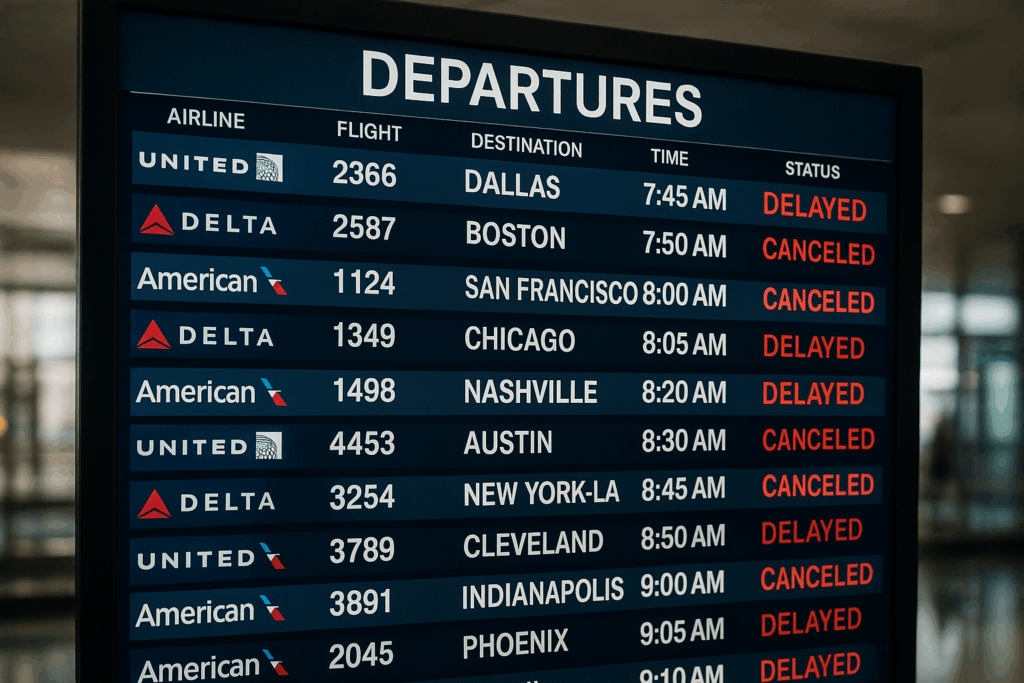Airlines across the United States are making strategic cuts to their schedules as the federal government shutdown continues to strain the aviation system. With air traffic controllers stretched thin and the FAA requiring reductions in flight volume at major airports, airlines are choosing which flights to protect and which to remove with the least network disruption. The result is a clear pattern: certain types of flights are far more likely to face cancellations, while others remain relatively stable.
Flights most likely to be canceled
Domestic flights to smaller cities
Flights serving smaller or less-frequented cities are among the first to be trimmed. These routes typically operate with lower passenger volumes and limited flight frequency, making them easier for airlines to eliminate without creating system-wide challenges. Many of these flights rely on regional carriers, which are already stretched and disproportionately affected by operational reductions.
Flights with limited schedules
Routes offering only one or two departures per day are particularly vulnerable. When airlines must meet FAA-mandated percentage cuts, they reduce flights that have the least number of alternatives. Removing a low-frequency route helps carriers meet reduction requirements without jeopardizing service on major, high-demand corridors.
Flights operated by regional carriers
This category is seeing some of the most significant impact. Regional airlines such as SkyWest, Republic, Endeavor Air, Envoy Air, and PSA Airlines operate a large amount of domestic traffic under the branding of mainline carriers. Even though these flights may appear as Delta, United, or American on a ticket, the “Operated by” line reveals the true carrier. These regional flights are more likely to be canceled since they serve smaller markets, fly smaller aircraft, and are easier to eliminate compared to larger mainline services. Travelers booked on these carriers face higher disruption risk.
Flights least likely to be canceled
International flights
Long-haul and overseas flights remain the most protected part of airline schedules. These routes bring in more revenue, have committed aircraft rotations, and require more complex crew logistics. They are not subject to the FAA’s mandated cuts and carriers are prioritizing them heavily.
Major hub-to-hub domestic flights
Flights between major hubs are central to airline operations. They support hundreds of connections and are essential for repositioning aircraft and crews. Airlines are working to preserve these flights above nearly all others, recognizing that cancellations here lead to widespread complications across their entire networks.
Flights required for operational continuity
Some routes are necessary for airline logistics regardless of passenger volume. Flights used for crew or aircraft positioning, or for maintaining scheduling integrity across time zones, are less likely to face cancellation. Even if they operate with lower loads, they play a pivotal role in keeping the broader network functional.
Additional caution for travelers: regional vs. mainline
During the shutdown, the most important distinction travelers can make is whether their flight is operated by a mainline carrier or a regional affiliate. Mainline carriers include Delta, United, and American. Their regional partners operate under names such as SkyWest, Republic, Envoy, Endeavor Air, and PSA Airlines. These regional-operated flights are significantly more likely to be canceled.
Flyers should check their reservations carefully. If the ticket shows “Operated by” followed by one of the regional carriers listed above, the risk of cancellation increases. Passengers are encouraged to call their airline and see if they can be rebooked, with no fee, on a mainline flight where available. This proactive step can help avoid last-minute cancellations and travel disruptions.
Travel Tips During Shutdown
We’ve compiled a list of practical & necessary travel tips with the notion that your travel times are going to be very long and the possibility of disruption.
What travelers should expect
As long as the shutdown continues, airlines will keep adjusting schedules and prioritizing their highest-value routes. Travelers tapping into regional airports, flying on low-frequency schedules, or booked on flights operated by regional carriers should remain flexible and monitor flight status closely. Meanwhile, those flying internationally or between major hubs should expect fewer cancellations, though delays remain likely due to air traffic staffing shortages.
The situation continues to evolve day by day, and travelers who take early steps to secure more stable itineraries will have the smoothest experience while the aviation system operates under significant strain.


